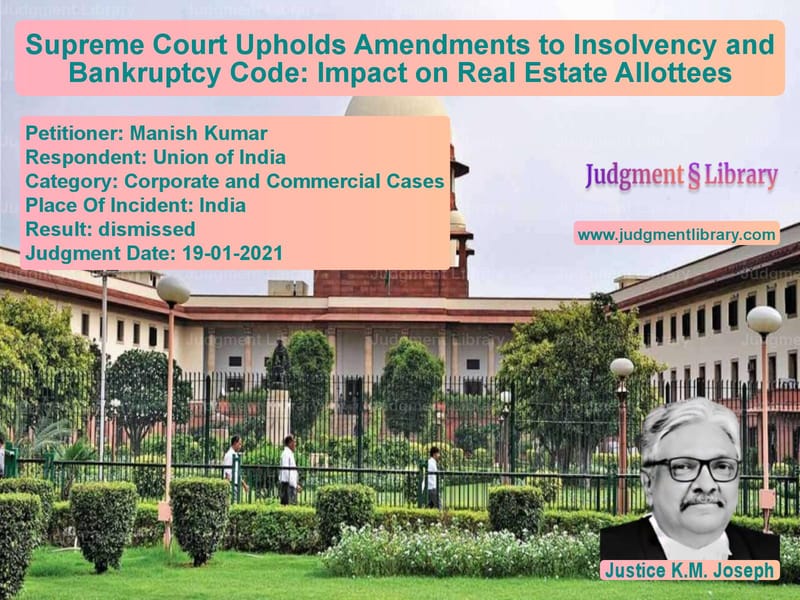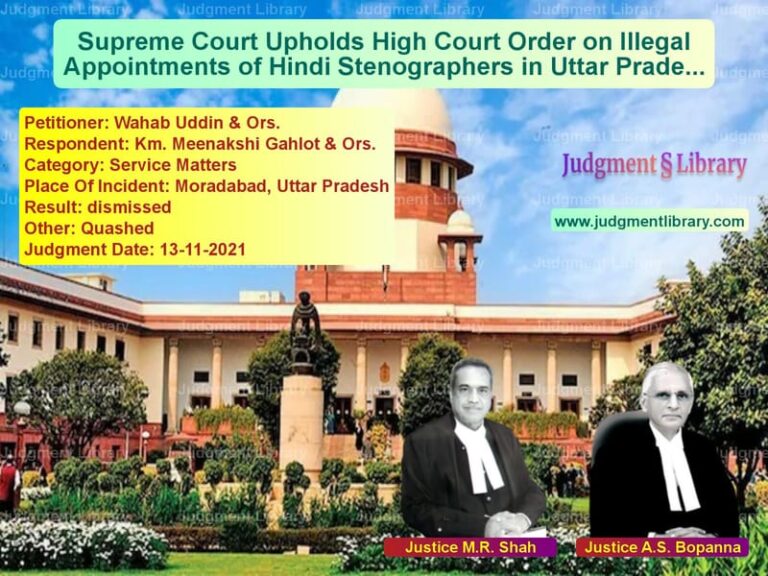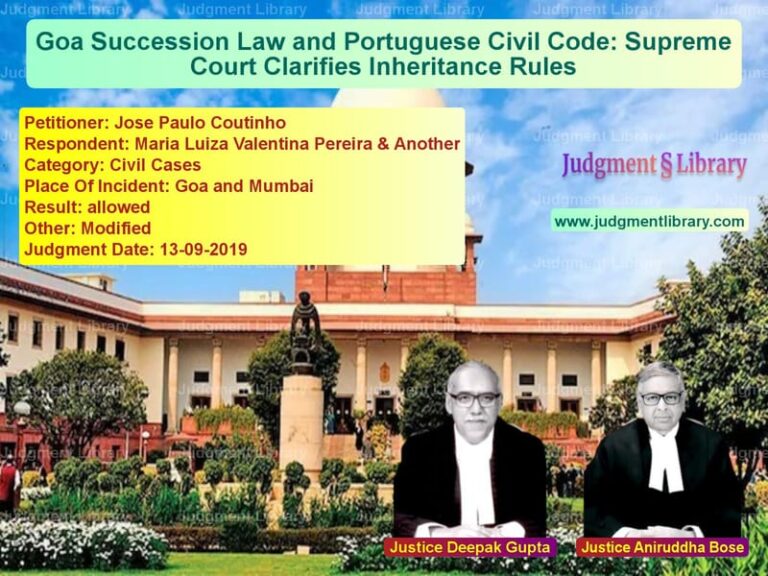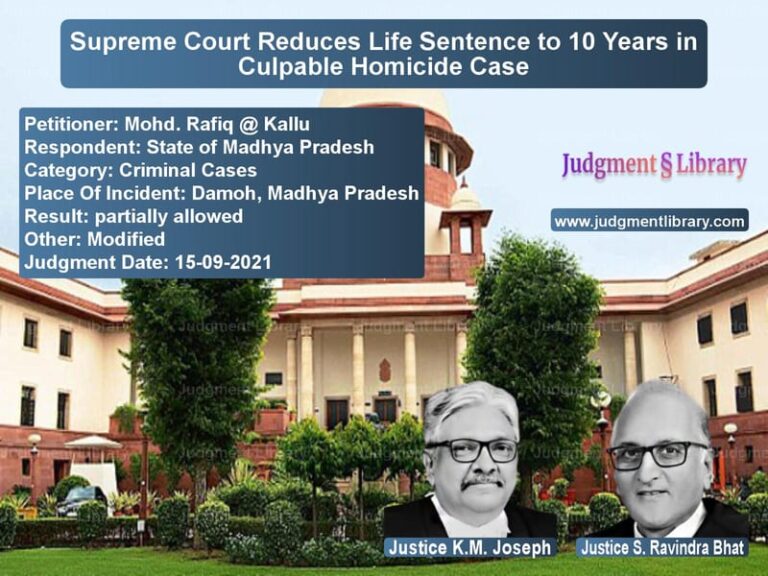Supreme Court Upholds Amendments to Insolvency and Bankruptcy Code: Impact on Real Estate Allottees
The Supreme Court, in a landmark ruling, upheld the constitutional validity of amendments to the Insolvency and Bankruptcy Code (IBC), 2016, specifically those affecting real estate allottees. The case, titled Manish Kumar vs. Union of India, addressed multiple writ petitions challenging Sections 3, 4, and 10 of the Insolvency and Bankruptcy Code (Amendment) Act, 2020.
These amendments introduced changes in how financial creditors, including real estate allottees, could initiate insolvency proceedings against corporate debtors. The petitioners argued that the new provisions imposed arbitrary restrictions on allottees and were discriminatory. However, the Supreme Court ruled in favor of the amendments, emphasizing their necessity in maintaining a streamlined insolvency resolution process.
Background of the Case
The primary issue in this case was the constitutional validity of the amendments, particularly Section 3, which altered Section 7(1) of the IBC. Before the amendment, a single financial creditor, including an allottee in a real estate project, could initiate the corporate insolvency resolution process (CIRP). However, the amendment mandated that at least 100 allottees or 10% of allottees in a single project must jointly file an application for CIRP.
Petitioners contended that these changes unfairly restricted individual allottees from seeking recourse under IBC, while operational creditors and other financial creditors did not face similar limitations. Additionally, Section 10 of the Amendment Act introduced Section 32A, which granted immunity to corporate debtors from prosecution for prior offenses if new management took over after a resolution plan was approved.
Petitioners’ Arguments
- The amendments violated Articles 14, 19(1)(g), and 21 of the Constitution by creating an unfair distinction between different types of financial creditors.
- The requirement for 100 allottees or 10% of total allottees imposed an unreasonable burden, making it nearly impossible for individual homebuyers to seek insolvency proceedings.
- The amendments were arbitrary and unfair, particularly since operational creditors faced no such threshold requirements.
- The retrospective application of the amendments led to unfair dismissal of pending cases that did not meet the new threshold.
Respondents’ Arguments
- The Union of India defended the amendments, arguing that they were necessary to prevent frivolous litigation that could destabilize real estate developers.
- The changes aligned with recommendations from the Insolvency Law Committee, which found that allowing individual allottees to file for CIRP was leading to misuse of the law.
- The requirement for a minimum number of allottees ensured that only serious and collective grievances reached the insolvency tribunal.
- The immunity under Section 32A was essential to attract new investors and ensure the revival of financially distressed companies.
Supreme Court’s Observations
The Supreme Court upheld the amendments, stating that:
“The threshold requirement for real estate allottees does not violate Article 14 as it is based on intelligible differentia and has a rational nexus with the objective of ensuring the smooth functioning of insolvency proceedings.”
The Court further clarified that the changes did not take away the rights of allottees but rather ensured that collective action was taken, reducing the burden on insolvency tribunals.
Regarding Section 32A, the Court observed:
“The provision aims to protect new management from past liabilities, thereby encouraging resolution applicants to invest in stressed assets without fear of prosecution.”
The judgment also noted that real estate allottees still had alternative remedies under the Real Estate (Regulation and Development) Act (RERA) and consumer forums.
Conclusion
The Supreme Court’s ruling reinforces the government’s commitment to balancing the interests of homebuyers with the need for a robust insolvency framework. While some allottees may find the new threshold challenging, the judgment emphasizes the importance of collective action and streamlined insolvency resolution. The decision sets a precedent for future cases involving financial creditors under IBC and highlights the evolving nature of insolvency laws in India.
Petitioner Name: Manish Kumar.Respondent Name: Union of India.Judgment By: Justice K.M. Joseph.Place Of Incident: India.Judgment Date: 19-01-2021.
Don’t miss out on the full details! Download the complete judgment in PDF format below and gain valuable insights instantly!
Download Judgment: manish-kumar-vs-union-of-india-supreme-court-of-india-judgment-dated-19-01-2021.pdf
Directly Download Judgment: Directly download this Judgment
See all petitions in Bankruptcy and Insolvency
See all petitions in Corporate Compliance
See all petitions in Company Law
See all petitions in Judgment by K.M. Joseph
See all petitions in dismissed
See all petitions in supreme court of India judgments January 2021
See all petitions in 2021 judgments
See all posts in Corporate and Commercial Cases Category
See all allowed petitions in Corporate and Commercial Cases Category
See all Dismissed petitions in Corporate and Commercial Cases Category
See all partially allowed petitions in Corporate and Commercial Cases Category







